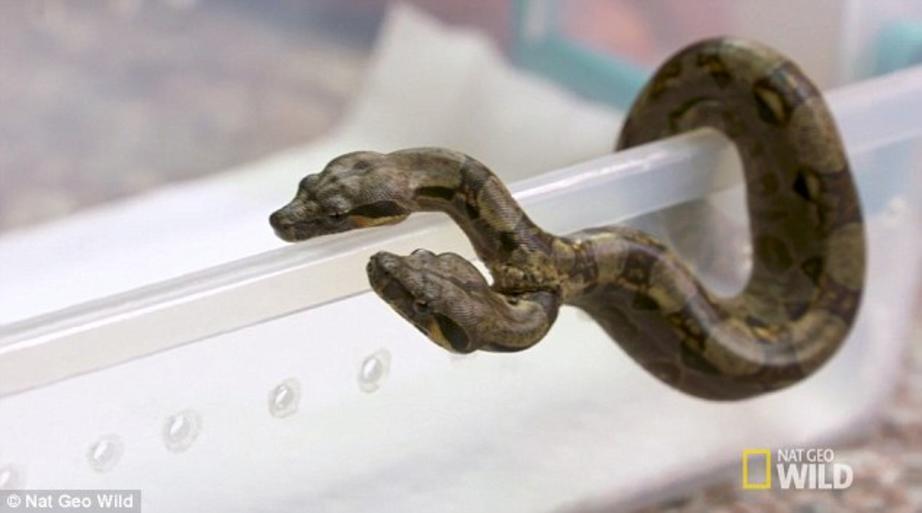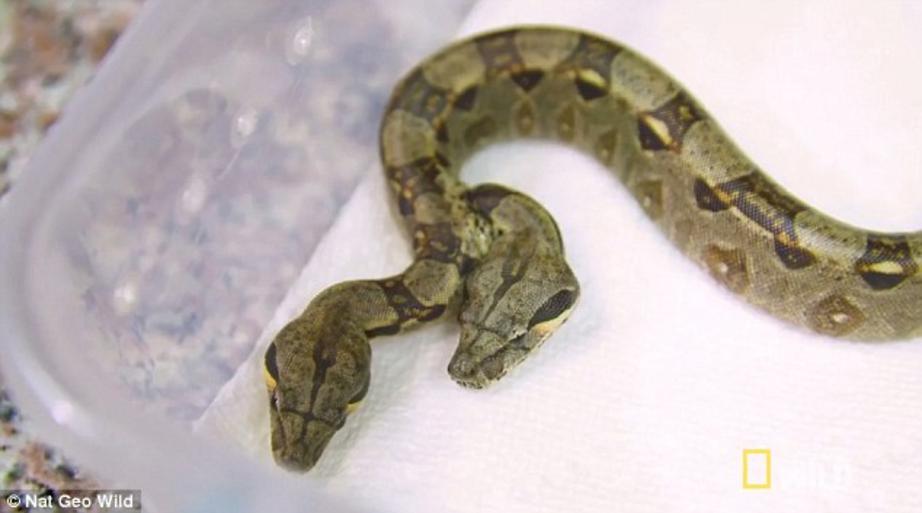Two-headed snake has extremely rare double hearts
Vets say the boa constrictor is a Siamese twin contained in one outer skin.
A snake breeder in Florida got a two-for-one deal with the latest offspring of his pet boa constrictor.
The two-week-old snake was born with two distinct heads. The heads emerge from one shared body, extending just a few centimeters from the fork in its neck. Each head lucidly examines their (or its) environment, flicking two distinct tongues through the air.
The snake (or snakes) was brought to celebrity vet Dr. K, short for Dr. Susan Kelleher, who owns an exotic animal care practice in southern Florida. The vet, and the bizarre cases she treats, are the subject of the National Geographic Wild TV show Dr. K.
It was Dr. T (Lauren Thielen), another vet at the practice, who x-rayed the two-headed snake. That process revealed an even rarer twist in its anatomy. Unlike other two-headed animals that tend to share internal organs, the snake appears to have two hearts.
"I was shocked it has two hearts," says Thielen. "But it was really cool to understand that the Siamese twin snake was really two snakes in one outer skin."

Using a non-invasive machine called a doppler ultrasound, the vets were also able to listen to the snake's heartbeats and confirm that there were two hearts pumping blood inside the same body. With the doppler ultrasound, they were also able to track the flow of blood.
While the two-headed snake is one of the more unique cases the vets have seen, two-headed snakes are not unheard of. Another two-headed snake, an albino Honduran milk snake named Medusa, was featured on Nat Geo WILD.
Cameras were rolling during Medusa's first feeding, a critical test to see if the snake could survive past infancy. One of Medusa's heads began to consume a dead mouse while the other watched. The reptile seemed to swallow its prey without an issue. Other two-headed animals have succumbed when the two heads fight over food.
The snake brought to Thielen is unique in that it may also have to two digestive tracts. Thielen discovered this after passing tubes down the esophagus in each head.
"If there are two digestive systems, then we may need to provide nutrition to 'both' snakes," she adds, noting this makes it harder for the snake to survive. "Most snakes born like this do die because… they cannot get proper nutrition, they share kidneys, or they cannot defecate normally."
Boa constrictors enter the world through live births, not external eggs. The two heads likely arose after the embryo began to split and make twins, but then suddenly stopped, leaving a conjoined pair.
It's a condition that has been seen in a range of animals, including sharks, porpoises, turtles, cows, and cats.
Video can be accessed at source link below.

